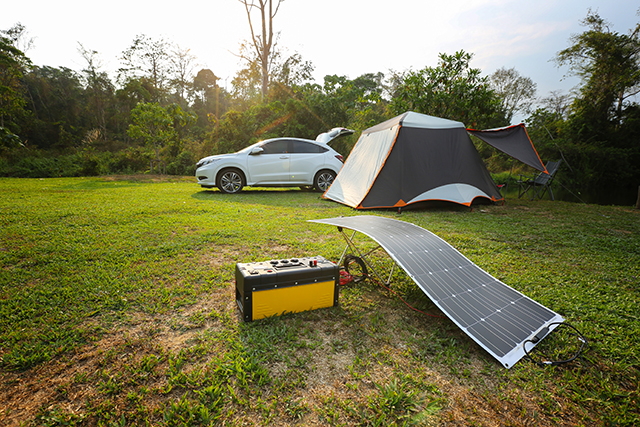Research team creates a variety of eco-friendly battery shapes using 3D printing technology
03/05/2019 / By Edsel Cook

Researchers from South Korea have tapped additive manufacturing techniques and environment-friendly materials to develop a plethora of new batteries. These new energy storage devices can be printed in the right shape and size, so they can fit even the smallest and oddest-shaped wearable electronics.
There is an increasing number of flexible electronics and wireless devices that are becoming available to consumers. These items can be worn on the body so that they do not get in the way of their wearer’s movement. However, battery technology has not kept up with the electronics they power. Most batteries are made of rigid materials in the shape of either circles or rectangles. Their shape and stiffness end up wasting valuable space.
Korea Advanced Institute of Science and Technology (KAIST) researcher Il-Doo Kim worked alongside his Harvard University counterpart Jennifer Lewis. They led their respective teams in a joint effort to design new batteries specifically to take advantage of flexible and wearable electronics. (Related: New biological batteries use energy inspired by electric eels, could be used on next-gen robots, bio-implants.)
These new 3D printed batteries are made from safe and eco-friendly materials
Microelectronic devices come in different designs and serve different purposes. But most of their internal spaces will be taken up by their respective energy storage device.
The majority of commercially-available batteries are either button cells or pouch cells. Their names describe them well; button cells are circular, while pouch cells resemble small bags that swell up when they are being used. Neither cell type, however, lends itself well to flexible electronics. So the KAIST-Harvard team worked on using 3D printing techniques to build a new line of batteries with different shapes.
They reported making ring-type, H-shaped, and U-shaped cells. Assisted by researchers at Korea Research Institute of Chemical Technology, the team were able to apply their additive batteries to wearable light sensor rings, small electronic devices that can be fit around the finger.
They chose aqueous zinc-ion as the charge-carrying material for the battery packs over the much more common lithium-ion. Aqueous zinc-ion is a much more stable electrolyte; it will not catch fire like lithium-ion batteries.
Manufacturing aqueous zinc-ion is also much safer. The organic solvents used in fabricating lithium-ion batteries are flammable, so the process must be performed in a dry room without any oxygen. In comparison, aqueous zinc-ion does not react to moisture or oxygen in the air, so its batteries can be built in more locations. Moreover, it’s covered in waterproof plastic packaging during the printing process, further increasing its level of safety.
Lightning fast charge times and mechanical robustness
The cathode of the new batteries needs to achieve three things. First, it has to be stable. Second, it needs to be modulated in different forms. Third, it must permit high charging and discharging rates.
The KAIST-Harvard team employed the electrospinning method to electrically weave carbon fibers into a current collector. They then spread an even layer of polyaniline conductive polymer across the surface of the carbon. The resulting cathode successfully integrated the current collector and the electrochemically-active layer. The latter formed a 3D structure of polyaniline that conducted electricity very efficiently. The battery only took two minutes of charging to reach 50 percent.
The best part is that the cathode can be produced without risking the active materials breaking off its surface. This excellent mechanical stability permitted the production of differently-shaped batteries that can flex alongside wearable electronics.
“3D-printed batteries can be easily applied for niche applications such as wearable, personalized, miniaturized micro-robots, and implantable medical devices or microelectronic storage devices with unique designs,” remarked Lewis.
Sources include:
Tagged Under: 3D printing, additive manufacturing systems, batteries, battery technology, energy storage devices, flexible electronics, lithium ion, new tech, wearable electronics


















